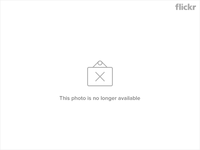Hi,
I fully recommend learning the fundamental principles of photography so you can get the most from your DSLR. This will stand you in good stead for any subject matter, be it an aquarium or a fast moving bird.
Learning the relationship between aperture, shutter speed and ISO is a good start.
Here's an article I often recommend -
http://photography-on-the.net/forum/sho ... p?t=414088
Here's a basic run down of how I take a full-tank shot using aquarium lighting. My techniques may differ considerably to others but they work ok for me.
1. Position the camera on a tripod.
2. Ensure the camera is exactly centered in all axis relative to the front glass of the aquarium. If you have a zoom lens i.e. 18-55mm you'll need to decide on what focal length you require. Wide (18mm end) gives an increased sense of depth, but cheaper lenses will incurr barrel distortion so the tank may look rounded. Towards 50mm and the aquarium appears more as it does to the naked eye in terms of perspective. Obviously as you adjust your zoom you will need to adjust your tripod.
3. Block out as much ambient light as possible to minimise reflections.
4. Set the camera to Manual mode.
5. Set the aperture to f/5.6, shutter speed to about 1/50 sec, ISO 800, auto white balance. If you have Live View use this as an exposure preview and you can tell roughly how the shot is going to look before you press the shutter release. If it's too dark or bright then adjust your aperture, shutter speed or ISO to suit. I won't go into details about what these do here, but the article I linked is excellent.
6. Set the focuson the lens to manual and pre-focus on the foreground of the aquarium. I also use Live View for this with 10x magnification for the sharpest results.
7. Experiment with different settings such as white balance to get best results. Auto white balance is usually very accurate in modern DSLR.
8. I tend to shoot in jpeg rather than RAW because I'm too lazy to process RAW. RAW gives you much better control over the image through post-processing software. I find my jpegs are usually useable straight from camera.
Using the above technique you are limited a lot by your aquarium lighting. Generally speaking the more light you have the better, so consider trying to supplement it if possible, ideally with daylight spectrum lamps. More light means you can use smaller aperture, faster shutter speeds and lower ISO. These generally mean better quality images.
There's other basic techniques such as equipment removal and cleaning the aquarium glass but I'm sure I don't need to explain that.
Cheers,
George














